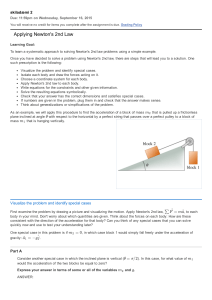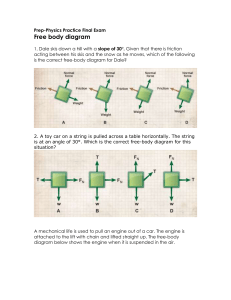

Momentum depends upon two quantities * mass and velocity.

FALSE - A less massive object would have a greater momentum owing to a velocity which is greater than that of the more massive object. TRUE - For the same speed (and thus velocity), a more massive object has a greater product of mass and velocity it therefore has more momentum. As a result, an increasing speed leads to an increasing momentum - a direct relationship. As the speed of an object increases, so does its velocity. TRUE - Momentum is calculated as the product of mass and velocity. However, the momentum of an individual object is altered as momentum is transferred between colliding objects. In the absence of external forces, the total momentum of a system is not altered by a collision. FALSE - To say that momentum is a conserved quantity is to say that if a system of objects can be considered to be isolated from the impact of net external forces, then the total momentum of that system is conserved. Only its acceleration would be westward.į. If the object is slowing down, its momentum is still eastward. If an object is traveling eastward, then it has an eastward momentum. FALSE - The direction of an object's momentum vector is in the direction that the object is moving. However, one should be quick to note that the object does not have to have a constant speed in order to have momentum.Į. When that inertia is in motion, the object has momentum.ĭ. FALSE - An object has momentum if it is moving. The kg m/s is the standard unit of momentum.Ĭ. FALSE - The Joule is the unit of work and energy. Momentum, like other vector quantities, is subject to the rules of vector operations.ī. Like all vector quantities, the momentum of an object is not fully described until the direction of the momentum is identified. An object with a changing speed will have a changing momentum.Ī.

The forward moving object will have the greatest momentum.

Moment of Force: It is the product of force multiplied by the moment arm length.Īngular momentum (L): The angular momentum of a rigid body is defined as the product of the moment of inertia and the angular velocity i.e.The Review Session » Momentum and Collisions » Answers Q#1-5 Momentum and Collisions Review Hence, we can say that impulse is equals to a change in momentum also. The relationship between the kinetic energy and Linear momentum is given by:ĭivide numerator and denominator by m, we get Momentum (p): The product of mass and velocity is called momentum.Where m = mass of the body and v = velocity of the body The expression for kinetic energy is given by: Kinetic energy (K.E): The energy possessed by a body by the virtue of its motion is called kinetic energy.


 0 kommentar(er)
0 kommentar(er)
